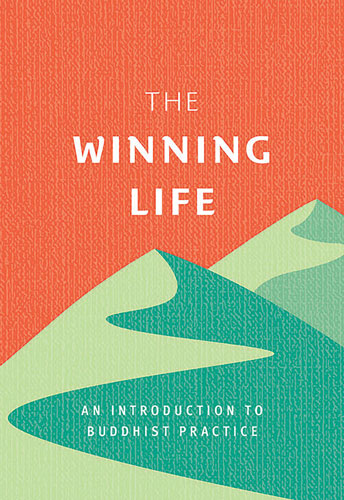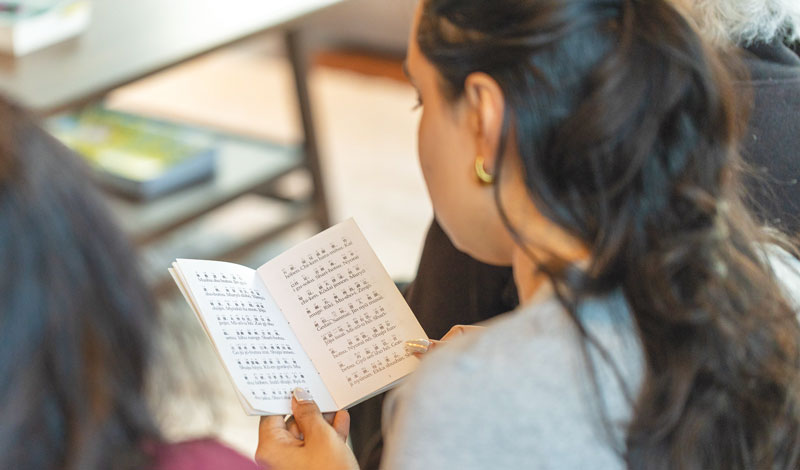This series, prepared by the SGI-USA Study Department, aims to answer questions about the basics of Nichiren Buddhism.
It’s easy to understand the benefits of a consistent Buddhist practice—but putting it into action can sometimes be a challenge.
Drawing inspiration from the writings of Nichiren Daishonin and the guidance of Ikeda Sensei, let’s explore how to build a steady rhythm of chanting Nam-myoho-renge-kyo each day.
Encouraging his disciples, Nichiren cites these words of a Buddhist practitioner:
Morning after morning we rise up with the Buddha, evening after evening we lie down with the Buddha. Moment by moment we attain the way, moment by moment we reveal our true identity. (The Record of the Orally Transmitted Teachings, p. 83)
“The Buddha” in this passage points to the Gohonzon. Rising with the sun and chanting abundantly in the morning aligns our life with the rhythm of the universe. It’s a time to set intentions and chant about specific goals for the day ahead.
At day’s end, after work or school, doing a vibrant gongyo is a chance to appreciate and reflect on your efforts. Sensei says:
Our practice of morning and evening gongyo is the foundation for advancing on the correct path of life. …
Failing to win in the morning can lead to an unsatisfactory day. … On the other hand, winning in the morning, getting off to a good start, leads to a productive day and puts you on a path to solid progress, ultimately culminating in a life of fulfillment and victory. (The Wisdom for Creating Happiness and Peace, part 2, revised edition, pp. 223–24)
Making morning and evening gongyo a daily habit builds steady momentum. Over time, this daily rhythm becomes the driving force for a victorious life.
Of course, there will be days when you just don’t feel like chanting. What matters is continuing—even if it feels like you’re just “going through the motions.” Your heart will more often than not “catch up” with your efforts.
Let’s say you can chant consistently for only three days. Simply refresh your determination and try again for three more days. If you repeat that 10 times, you’ll have chanted consistently for a whole month!
The Daishonin reminds us: “To accept is easy, but to continue is difficult. But Buddhahood lies in continuing faith” (“The Difficulty of Sustaining Faith,” The Writings of Nichiren Daishonin, vol. 1, p. 471).
Continuing With Good Friends in Faith
So, what does “continuing faith” look like? It can take many forms, but two aspects stand out.
The first is engaging with “good friends”—comrades in faith. This might mean chanting with fellow members, seeking guidance from seniors in faith or supporting those around you.
The second aspect is cultivating self-motivated faith. Sensei describes a self-motivated practitioner as someone who refuses “to let any external influence deter them” (The Teachings for Victory, vol. 7, p. 74).
To have self-motivated faith is to keep moving forward through any obstacle by studying Buddhism, chanting abundantly and sharing Buddhism with others. As you develop in faith, you’ll begin to see that every situation is an opportunity to grow, transform and open a path forward for yourself and those around you.
Becoming Stronger Through Steady Efforts
The key is to not get disheartened when you stumble in your efforts to build a consistent Buddhist practice. Each small step taken to overcome your limitations—challenging yourself to chant five more minutes or to study even one line of Nichiren’s writings—becomes a powerful cause for developing your life.
Try not to miss gongyo, but if you do, don’t be too hard on yourself. Refresh your determination, keep a positive outlook and celebrate the efforts you do make. That will help you build the confidence to keep going. Over time, your steady efforts will create an unshakable rhythm of hope, growth and fulfillment.
The joy of Buddhist practice lies in always moving forward—becoming wiser and stronger, and revealing your limitless potential day by day.
—Prepared by the SGI-USA Study Department
Now Available

The Winning Life, revised edition
$2.95
The practice of Buddhism as taught by Nichiren Daishonin is a catalyst for experiencing an inner revolution. Key to building a state of absolute happiness is the process of this inner transformation. The Winning Life explains the basics of the practice of Nichiren Buddhism in the lay organization, the Soka Gakkai, and how it leads to a victorious and happy existence amid daily struggles.
Find it online at bookstore.sgi-usa.org.
You are reading {{ meterCount }} of {{ meterMax }} free premium articles

